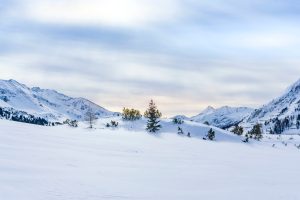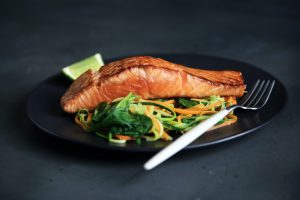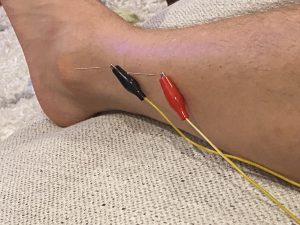Self-Care
3 Tips for Winter Self-Care
 With the shorter days and longer, colder nights of winter upon us, it is in our best interest to follow nature to best support well-being. Of course, to some degree it is relatively impossible for most of us to alter most things about our lifestyle based on the seasons. Modern society does not follow, nor concern itself with the Tao. The Tao does not make money nor promise love, and even if it could we are not learned enough in it to follow with much accuracy. Nevertheless, we can still do what we can when we can, make minor modifications, certain mindful choices whenever possible, as I would be remiss to not share.
With the shorter days and longer, colder nights of winter upon us, it is in our best interest to follow nature to best support well-being. Of course, to some degree it is relatively impossible for most of us to alter most things about our lifestyle based on the seasons. Modern society does not follow, nor concern itself with the Tao. The Tao does not make money nor promise love, and even if it could we are not learned enough in it to follow with much accuracy. Nevertheless, we can still do what we can when we can, make minor modifications, certain mindful choices whenever possible, as I would be remiss to not share.
- Stay warm… but not too warm! While Chinese Medicine is all about warmth, encouraging vasodilation over constriction, if you live in a climate that has the four seasons it does not benefit your “wei qi” (immune system) to never experience the conditions and elements at all. This does not mean go out wearing belly t-shirts, short sleeves, or no socks at the first weather report above 40 degrees. On the contrary, hats and scarves are highly recommended, as is not being overly sedentary or sheltered. A sheltered existence, whether literally or figuratively, creates a weaker shell. For our purposes we might think of our immune system as our shell. Even if just for a commute or walk around the neighborhood, it is important to get outside on most days, bundle up, and not fall too victim to the privilege of modern climate control.
- Sleep earlier. While the recommended bedtime in Summer is 11pm, in Winter it is 10pm. This doesn’t mean get into bed at 10pm, watch a movie until 12, and fall asleep around 12:20. It means to be unconscious at 10:00. For those of us this presents a challenge for, the earlier you can do the better. There is a biomedical belief that for healthy sleep habits, consistency of bedtimes is most important. If one goes to sleep at 1am a few nights out of the week, one should do so every night. From a Chinese Medical perspective, this is a bit like recommending if you eat pizza once a week you should do so daily, so that it is never able to shock your microbiome. Instead, we recommend making the healthiest possible choice as often as possible. Also, don’t eat pizza every week. I love pizza too, but let’s be honest. It’s fast food.
- More (red) meat), less raw food. I know it feels like Chinese Medicine doctors are always trying to get people to eat more red meat and less raw food, but that really is not the case. The summer is a time for both raw foods and red meat in moderation. There can be more days of veganism or pescatarianism in Summer, as excessive beef is too warm for most bodies on hot days. By contrast, Winter is the coldest, most yin time of year. It is the time to protect our bodies’ “yang qi,” or metabolic fire, as we observe in so many other animals as a time to store fat (you can begin your South Beach diet in April). The oppressive cold of yin requires balance in the form of yang-warming ingredients—think steak cooked with garlic, onions, or ginger. If you cannot consume red meat it is advisable to accentuate the warming spices. Please note, this does not mean hot sauce or red pepper, which is a bit to healthy spices what coffee is to much needed rest. It will give a temporary surge of warmth, but in the long run will dry out the healthy stomach fluids, which will make it more difficult to absorb nutrients and generate natural yang inside the body. Spicy food is not “yang,” any more than yelling or shouting is “strong.”
For my part what I can offer for the next few months is more moxibustion, heat lamps, and heated tables when indicated. Burning the mugwort herb on acupuncture points generates healthy warmth and organ fluids in a way that no other modality can, in my opinion. In biomedical terms, it reduces cartilage damage from inflammation by modulating the NF-κB signaling pathway. It also drops pain via the suppression of Cox-2, which is an inductible enzyme that is highly expressed with pain. Recall, one of the oldest Chinese Medicine maxims: Where there is pain there is stagnation. Where there is stagnation there is cold. This is why my office smells like an incense store in winter.
Gimmick Diets: Strengths & Weaknesses
 It’s not that gimmick diets don’t work. There couldn’t not be science behind them, just as there is in anything intentional in food or nature, anything we put into our bodies. The issue instead, why they get labeled as “gimmick,” is the allopathic, one-size-fits-all paradigm from which they are often recommended.
It’s not that gimmick diets don’t work. There couldn’t not be science behind them, just as there is in anything intentional in food or nature, anything we put into our bodies. The issue instead, why they get labeled as “gimmick,” is the allopathic, one-size-fits-all paradigm from which they are often recommended.
I’m confident any diet of complete abstinence, whether gluten and dairy free, veganism, paleo, keto, or intermittent fasting, can benefit certain people for certain amounts of time; but just as is the case with herbal or western medicine, the only way for them to be truly effective, intelligently prescribed, is by knowing not only their benefits, but their flaws.
For example, when we nourish blood with herbal medicine, we should beware of creating internal dampness and modify accordingly. When we drain dampness we should beware of drying healthy body fluids and modify accordingly. Western medicine does not have this luxury. They cannot modify pharmaceuticals beyond dosage, and even if they could, subjective systemic climate is not a part of their pathology diagnoses.
May people benefit from the vegan diet. By eliminating meat for certain periods of time one will surely clear damp heat from the stomach and intestines, as meat is a heavy substance that is more difficult to break down than most carbs or vegetables. On the other hand, over time the vegan diet will likely not provide enough “qi and blood,” as there is no greater source of these than animal protein. If veganism was an herbal prescription we might liken it to a bitter cold medicinal, such as coptis root (which is why coptis root is almost never given to vegans).
At the opposite pole is the ketogenic diet, where one is not permitted any carbs whatsoever, and instead eats a great deal of animal protein. Originally designed for epilepsy patients in the 1920s—now used more for weight loss in the 2020’s—it is supposedly great for reducing neurological inflammation, which is logical as this is especially spiked by simple sugars. By eliminating sugar, a great deal of dampness will be drained from the stomach and pancreas, however over time the excess animal protein will create systemic heat, which eventually creates inflammation, synonymous with more dampness. This might explain why many people on the keto diet supplement with magnesium to avoid constipation. Magnesium is a “cold mineral” that if taken over time will have such side effects on the stomach. My understanding is to do the ketogenic diet intelligently, one obviously cannot avoid animal protein, but should be most forward with fish, eggs, and nut butters to avoid creating excess heat.
More people these days are practicing intermittent fasting than ever before, and most are experiencing some superficial benefit, albeit with underlying side effects. The Chinese said the stomach qi is strongest between 7-9am. Western medicine says this is the time we are most sensitive to the insulin hormone, whose job it is to break down glucose. These mean the same thing, which is that science agrees with the maxim of other cultures and generations past: Breakfast is the most important meal of the day. By skipping breakfast we might drain dampness from the body, but we do so at the expense of the healthy stomach fluids. People might lose weight or feel great in the short-term, but over time they experience other digestive issues and can’t figure out why, because they are “doing everything right.” A more intelligent way to do this would be to skip dinner, however this does not align with our lifestyles and cultural norms. Instead, it is most advisable when practical, to eat all of our food between 7-7, the latter of which being when insulin resistance dramatically spikes.
Finally, I cannot see any drawback of going gluten, sugar, and/or dairy free. It does wonders for autoimmune, thyroid, and neurological patients, otherwise to prevent such conditions. Gluten and dairy are not toxic the way that sugar is, but they are damp-causing foods with little to no redemptive qualities. Dairy would be far down the list of healthy sources of calcium or protein, and almost everyone with stomach, lung, or skin issues greatly benefits from 3-6 months of abstinence. Instead, I am always a proponent of Eastern nutrition, which recommends all cooked foods, mostly vegetables, with small but daily portions of carbs and animal protein.
I hope this was insightful or helpful, and as always all questions and comments are welcome!
Healing my Acute Ankle Sprain Overnight!
 Every once in a while I am reminded, by way of my own personal suffering, of the incredible power of our medicine when we “nail it,” usually thanks to the healing hands of others, but sometimes even by “representing myself in court.”
Every once in a while I am reminded, by way of my own personal suffering, of the incredible power of our medicine when we “nail it,” usually thanks to the healing hands of others, but sometimes even by “representing myself in court.”
Thursday mornings are generally the most challenging at home. I have to leave a bit earlier to get to the school downtown and teach, which means I have to prepare breakfast and the baby’s things a bit faster, and often times endure her expressions of raging heartbreak when I must break out of the house shortly after she wakes up. Last week was one such morning.
As Jillian scrambled to get ready upstairs and I to prepare to leave downstairs, Peyton found herself in a “Daddy mode,” wanting me and only me, as my wife attempted to dress and brush teeth in hyper-speed so as to not leave our very mobile, curious toddler alone downstairs. Finally, it was 7:55, my hard out. I picked up the baby, carried her upstairs in hysterics, kissed her, set her down in front of my flustered wife, scrambled down the steps, and WHAM! Rolled my left ankle inward and exclaimed in pain in lieu of shouting “I love you,” on my way out.
I’d gotten lucky. On my walk to the train I realized the sprain or strain, or whatever had just happened must have been mild, as I felt only a mild twinge of pain at the ankle. I figured this should be a quick fix while watching TV later that evening.
But over the course of the day, I observed the pain grow gradually worse, and it wasn’t because I was standing or pounding on it excessively. To the contrary, supervising student clinic shifts is mostly sedentary and physically undemanding. By the end of the shift I was truly limping, to the point that it was difficult to get down the subway steps. By the time I got off the subway it was difficult to drag myself through the tunnel at Penn Station, requiring manual use of a wall to support my limp. And by the time I got off New Jersey Transit a half hour later I was in pain even at rest and could not apply any pressure to the foot whatsoever. In all of my youthful years skateboarding and playing soccer this was easily the worst sprain I’d ever had. I hopped down the stairs one step at a time and needed a ride home from the station.
As most of you know, I am a big believer that painkillers of any form should be relegated for pain—not discomfort—as my opinion is the laissez faire way in which they are ingested likely contributes over time to malabsorption in the gut, which is a primary etiology for many diseases. However, they do have their place, and this was one of them. With both sides of my ankle now throbbing, even while elevated on the couch, I ate some soup and took the max dosage of ibuprofen. From there the pain subsided and I returned to Chinese Medicine.
San Huang San is an empirical treatment for the first stage of such injuries. Nicknamed “herbal ice,” it reduces inflammation even more powerfully, but instead of constricting local blood circulation it enhances it, and I desperately wish all professional athletes knew about this ancient cure. I hopped into the kitchen, cracked an egg into a bowl, removed the yolk, and poured the herbal powder in with the white part to make a poultice. Stirring, stirring, stirring furiously, while my ankle pounded, pounded, pounded furiously with pain, I was determined to get back to the couch and begin this healing process as soon as possible.

Step 1: Bleed the “jing wells.” Jing well points are the first on each meridian, which means ends of the fingers and toes. It’s not always the most pleasurable experience, but pricking these points with a lancet to drain stagnated blood along the channel of physical trauma is a great way to begin the anti-inflammatory process by making space for new blood to come in. It’s a bit psychologically challenging to do on one’s self, but I managed, on the ends of both the big and fourth toes.
Next I used a spoon to apply my brown pasty, egg-white-based poultice to the entire ankle and wrapped it all up with bandages from our medicine cabinet. When the ibuprofen kicked in, I was no longer in pain at rest, but still was unable to put any weight whatsoever on the foot. That night I chose to sleep on the couch downstairs, as opposed to thunderously hopping up the steps and surely waking the baby.
Before bed I did acupuncture: Two points along the posterior tibial nerve pathway that innervates the medial malleolus (inner ankle), and two points along the peroneal longus and brevis respectively, which innervate the lateral malleolus (outer ankle). 15 minutes on each side, a protocol I was about to great practice in performing in the week to come.
I canceled my entire workday on Friday (sorry everyone), just praying that things would be manageable by Monday. When I woke up the next morning I was not in pain at rest, which meant I could put the Advil away for now. Before choosing to hop to the bathroom I thought I’d give a very light limp a try. I braced myself by my arm up against the living room wall and put the gentlest pressure I could muster onto the floor. No real pain. “Heyyy, that’s at least some improvement!” I took another step, this time cautiously applying even more pressure, and again noticed zero to minimal pain.
In my 20 years as a patient of Chinese Medicine, that walk from the couch to the bathroom was one of the most awe-inspiring, amazed experiences I’d ever had. With every step I applied more pressure and with every step I felt more gratitude and disbelief. I knew the reputation of San Huang San powder. I’ve used it on patients as well as on myself before, but I’d never seen it work at this speed with this degree of efficacy. My ankle was 80-90% better literally overnight. I almost thought twice about calling my patients to reschedule the afternoon, but with the help of a more level head from my better half I thought better of it and took the day to rest. Instead, and to satiate my Type A workaholism I purchased an online webinar by one of my mentors and spent the day studying. I am now one week removed from the sprain and feel 100% better.
Most people are aware of Chinese Medicine’s efficacy at treating chronic pain and injuries, but don’t realize that many such protocols, powders, formulas, and treatments were created and developed to treat injured soldiers in the ancient times of China’s warring states. Instead of the western RICE method, which even its creator, Dr. Gabe Mirkin, has conceded as wrong, please don’t hesitate to reach out the next time you sprain an ankle, break a bone, or tear a ligament. Like the smartphone saying, “There’s an app for that,” in Chinese Medicine we might echo, “There’s a treatment for that.”


